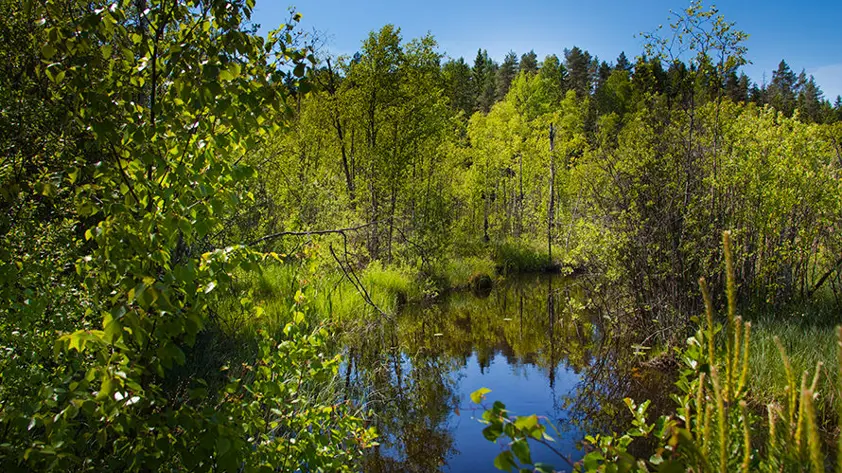Wood is UPM’s most important raw material. As an international organisation, UPM sources wood from several countries, most importantly from Finland and Uruguay. Wood is produced in two different ways. In Finland, forest owners grow native tree species which arrived in the area after the last ice age: spruce, pine and birch. Trees produced for raw material for industry are grown in natural forest ecosystems, thus requiring no changes in land use. After regeneration felling, a new forest is always planted in the same area. In Uruguay, the industry mainly uses Eucalyptus trees. These trees are grown on plantations which were established on grasslands formerly used for cattle grazing. Despite their differences, both production methods have similar land management targets.
Forest certification is a tool to help to control the impacts of wood production. Country-specific standards provide very detailed instructions for different stages of forest management. The targets and obligations are related to efficient production of high-quality wood, as well as taking climate, water protection, biodiversity and local people into consideration in forest industry solutions. Globally, forest certification is an important tool in promoting the sustainable use of natural resources. For consumers, certification is a sign of sustainability and responsibility.
UPM has actively developed forest certification since the 1990s. In Finland, this has meant new goals and completely new practices. Saving more deadwood, establishing mixed forests, introducing more diverse structural variation and preserving valuable habitats and species are essential environmental objectives for forest certification. Lately, the emphasis on transparency and stakeholder engagement has also been constantly growing.
PEFC has been building the foundation for forest certification in Finland since the 1990s. The FSC scheme, endorsed by environmental organisations, joined in later. After years of negotiation, the Finnish FSC standard was established, and UPM certified its own forests in 2011. The year after that, UPM started to offer FSC certification (FSC C 109750) to its clients as a forestry service. UPM’s experience with FSC in other countries contributed to the launch of the FSC scheme in Finland.
The level of environmental study, forest resource data and environmental data in Finland is the highest in the world. This can also be seen in the level of detail at the operational level in certified forests. An independent audit company is responsible for ensuring that the forest standard is followed and decides whether the standard’s requirements are met.
UPM is committed to the continuous improvement of its operations. This also applies to the FSC certified forest industry. Important training themes related to the certification include, for example, the preservation of valuable habitats and best practices for determining their borders, the protection of threatened species, the appropriateness of water protection, and stakeholder engagement practices.
Recognising the multiple uses of forests and their recreational value, as well as the growing importance of their natural value, are central considerations in the current operating environment. Forest certification is standardising this change. UPM intends to continue its involvement in the development in the future.

